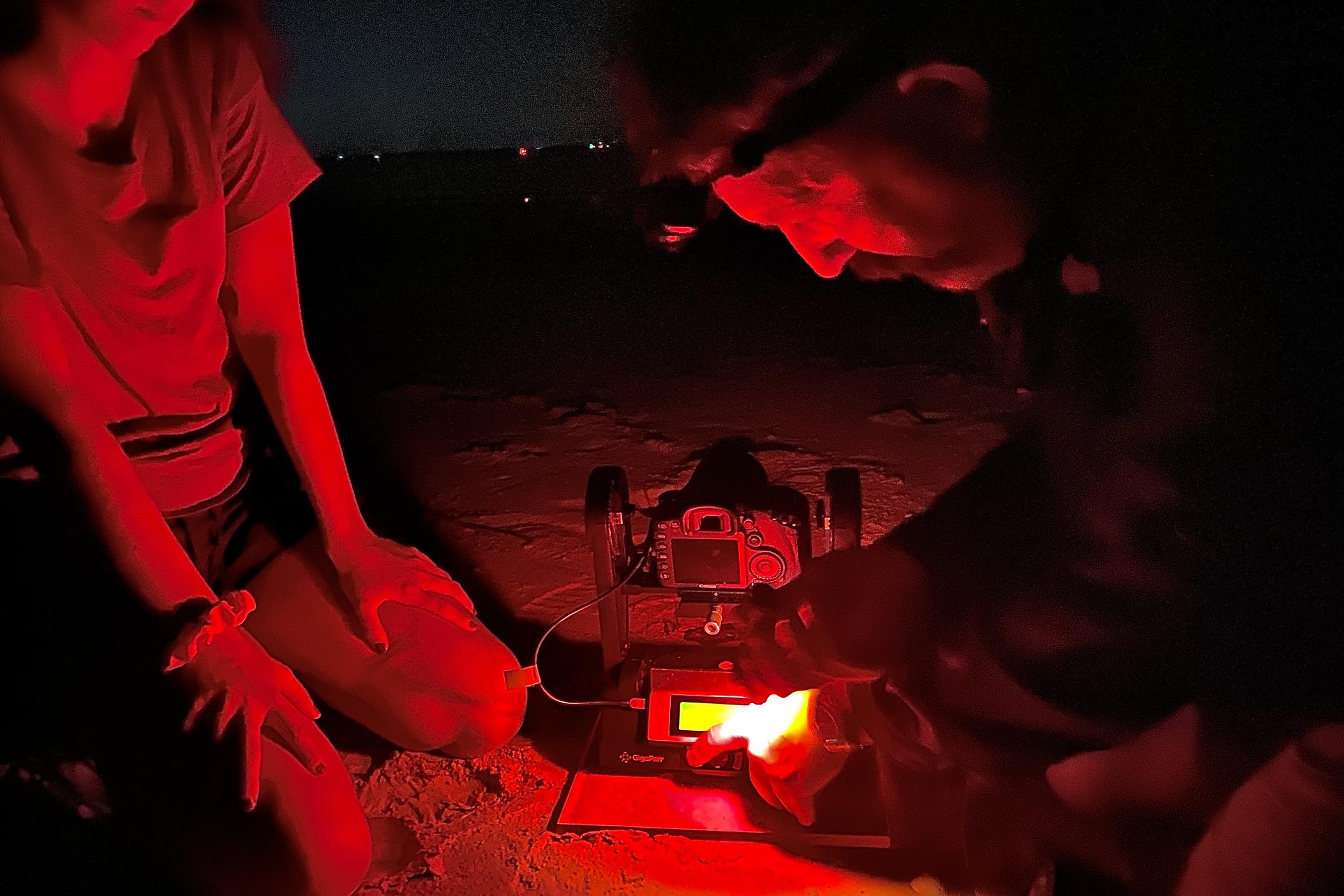
Caption
At top, a panoramic image shows what Driftwood Beach on Jekyll Island, Ga., may look like through the eyes of a sea turtle facing inland. The bottom image shows the same perspective as humans see it.
Credit: Chris Hintz / Savannah State University


